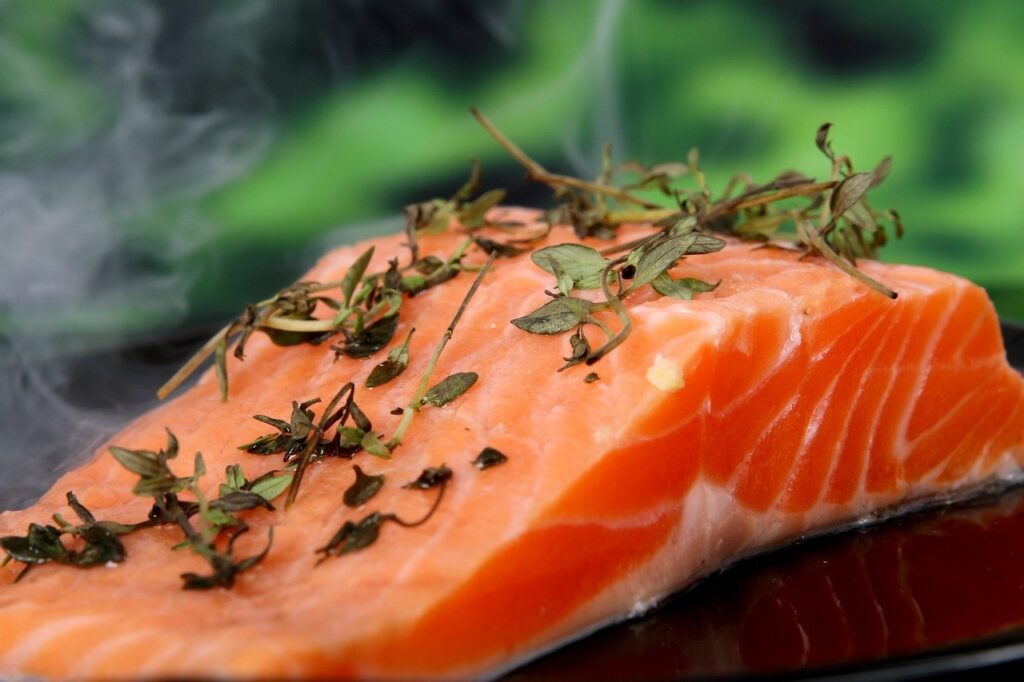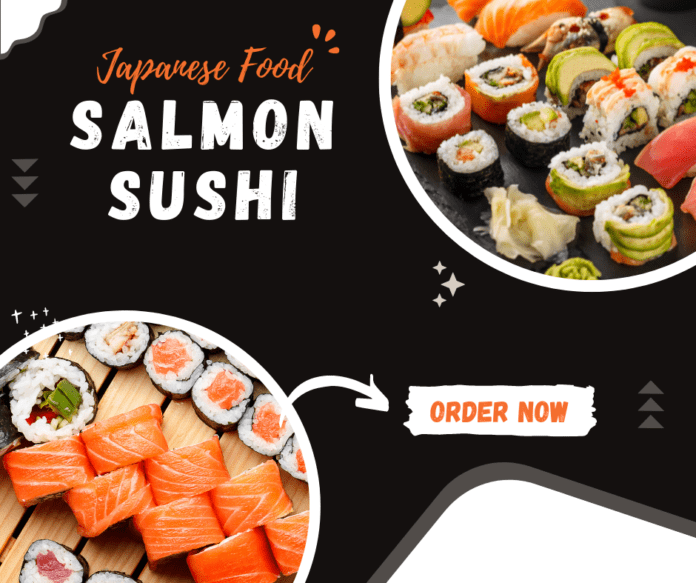Fresh Salmon is a delicious and fishy snack and it is reasonable to ask if it’s safe. There’s a good thing it’s safe to eat raw , provided you prepare and store the food properly. Plus, the best part is we’ll show you what you need to do to make it so.Fishy Snack Salmon If You Eat Undercooked Salmon.
Be prepared for a discussion that will guide about how to eat raw Salmon without having to play food poisoning roulette.
Pages of Contents
Can I eat salmon that is raw?
Yes indeed, yes and yes. Also, it’s delicious.
However, that doesn’t mean that you’re able to slink down the river, chop yourself a salmon and eat it like Gollum. It might work on bears. However, it could cause you to become sick.
Let’s face it, however there’s a chance that you won’t get the fish straight from the sea. A majority of people buy salmon from the frozen section in their neighborhood supermarket that already greatly reduces the risk of stomach problems.
Salmon is less risky than all other animal protein sources to consume raw, if you store it and prepare it in a safe method. However, it is still the risk of being infected by parasites, bacteria, and other pathogens that could cause problems in your body.
Do I consume raw salmon?
If you’d like to. We’re not able to tell you the right way to go.
A variety of foods like sashimi and gravlax use raw salmon as their main ingredient. Cooking salmon in these meals would essentially make the dish unpalatable (not to mention, it’s somewhat of a disrespect to the food culture of the region in particular with food like sushi that is steeped in traditions).
Can you eat salmon that has been cooked undercooked?
Nope.
Salmon cooked in a pot is generally safe, while raw salmon is generally secure. Salmon that’s between, however? This is grade-A-risk flesh.
If you are cooking salmon, ensure the fish has an ideal core temperature of 140oF (63oC). The reason? The majority of viruses, bacteria, along with other pathogens flourish at temperatures that range from 40 and 140oF (4 to 60oC).
So, the refrigerated fresh salmon may be too cold for the bacteria to grow. Salmon cooked to perfection is way too hot. Salmon that is not cooked properly can be a breeding ground, where each bite becomes the game of toilet bowl roulette for the next you. It’s best to stay clear of eating it.

It sounds like fish Risks of salmon that is contaminated
The raw salmon is delicious and secure enough to be a staple of many cuisines all over the world. But this does come with a few risks. It is an animal-based protein. As with the majority of protein sources from animals, it could be an ideal source of food for parasites, bacteria, and other microscopic nits.
The fresh salmon you buy in the stores must be free of contaminants. However, this is not an assurance.
Parasites and bacteria can appear
Even if food producers adhere to all laws regarding health and safety There is always a small chance of contamination. It’s not the fault of food industry also. Parasites bacteria, viruses, and parasites are living. They are also alive because, as “Jurassic Park” showed our children, “Life, uh …. has an answer.”
Based on the FDA According to the FDA, salmon is known to be a food source for parasites. One of the most popular the salmon-loving parasites is helminths which is also known as Diphyllobothrium Nihonkaiense. The tapeworms can be found in all types of fin-fish such as salmon.
If you contract an infection caused by Diphyllobothrium Nihonkaiense it is possible to be diagnosed with diphyllobothriasis. This could cause vomiting, diarrhea, unwanted weight loss, and abdominal discomfort. This is, of course, unpleasant and should be avoided.
It’s not just about parasites However. Salmonella, possibly the most well-known food borne bacterial poisoning is the most likely risk when you consume salmon that has been contaminated. Salmonella isn’t just the one pathogen to linger at the raw salmon gathering also — there’s an entire plethora of virus and bacteria that are found in the raw salmon.
They are (but they aren’t the only ones):
- Shigella
- Vibrio
- Clostridium botulinum
- Staphylococcus aureus
- Listeria Monocytogenes
- Escherichia coli
- Hepatitis A
- Norovirus
Organic pollutants that are persistent pose a threat to any seafood
There’s also a chance that salmon (both wild and farmed) contain tiny quantities of organic persistent pollutant (POPs).
POPs are anything that is toxic to the environment, such as chemicals used in manufacturing and pesticides. POPs are always a danger for any kind or seafood because the majority of these chemicals are found in the water of our lakes, rivers and oceans.
The exposure to POPs can increase your risk of
- Cancer
- congenital anomalies
- immune disorders
It’s crucial to remember that these risk levels are the highest in the case of prolonged, extensive exposure to POPs. The tiny amounts of POPs that could be found in your raw salmon won’t cause health problems for the long term according to research findings in the study that tested the quality of products for the presence of brominated flame retardants in an Spanish market for fish.
That’s right, eating raw salmon comes with risk. However it’s completely safe to eat salmon raw.

How do you keep raw salmon in a safe place?
In the case of raw salmon (like the rest of your food), storage is the most important thing when you wish to keep the chance of stomach discomfort as low as is possible.
Conserving your salmon in its raw form at the correct temperature is crucial. This is what refrigerators are designed for however, isn’t it? If your refrigerator isn’t leaking (so it’s able to maintain temperatures at 40 degrees Fahrenheit (4degC) and below) So, keeping the salmon inside should provide you with enough. After it’s in there you should eat your salmon inside 1 to two days.
How do you cleanse raw salmon/undercooked salmon
There’s a debate going on about whether or not it is necessary to wash meats prior to cooking them and salmon isn’t an exception.
The debate does seem to be between anecdotal evidence (“My Mee-Maw said you should always wash your fish and meat.”) and actual science (the USDA and food scientists suggest that rinsing animal proteins doesn’t actually kill any bacteria, but can increase the risk of cross-contamination).
There are times when you’ll want to offer your salmon a clean to eliminate any loose scales or debris (especially when you’ve skinned the fish yourself). If you want to planning to wash your salmon that is raw, make sure that you use cold fresh water. The warm temperatures transform the salmon slices into a Microbial orgy.



